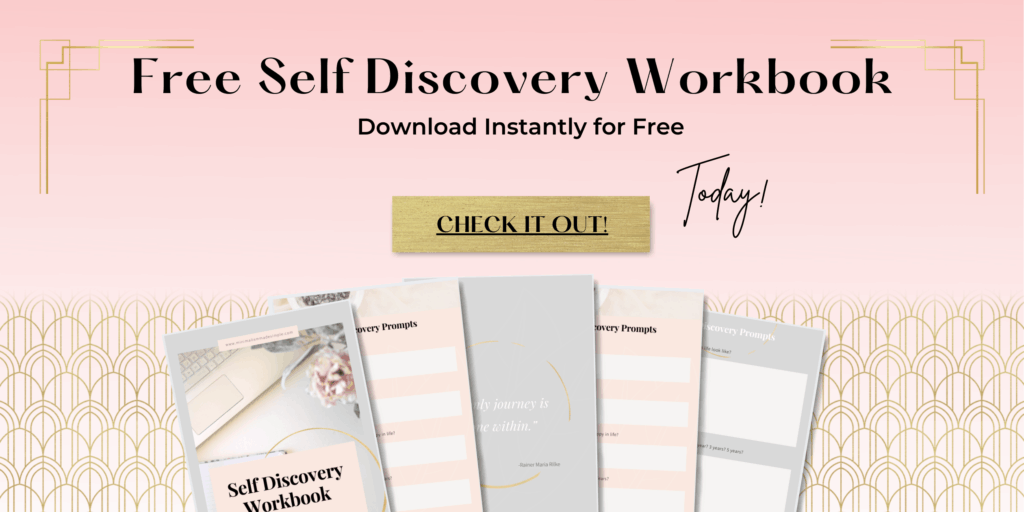(Article Updated October 2023)
When faced with a difficult decision, it can be overwhelming and stressful to not know what to do. This feeling of uncertainty can arise from various situations, such as choosing a career path, deciding on a major life change, or even making a simple decision.
However, it is important to remember that feeling unsure is a normal part of the decision-making process.
Life doesn’t always play the way we planned it to as things happen that are beyond our control.
Sometimes, the things we want just aren’t the things meant for us. In this article, we’ll be talking about the 10 things to do when you don’t know what to do.
Key Takeaways
- Feeling unsure is a normal part of the decision-making process.
- Understanding the problem and identifying the root cause of the uncertainty is the first step in overcoming it.
- Utilizing tools and techniques such as creating a pros and cons list or seeking professional guidance can aid in making an informed decision.
How to Approach Not Knowing What To Do
When faced with a problem, it’s important to take a step back and understand the situation before taking any action. This section will explore two key aspects of understanding the problem: identifying the issue and recognizing feelings.
Identifying the Issue
Before any problem can be solved, it’s essential to identify the root cause of the issue. This involves taking a closer look at the symptoms and behaviors that are causing the problem. It’s important to ask questions and gather information to understand the situation fully.
One effective way to identify the issue is to use a problem-solving framework such as the “5 Whys.” This involves asking “why” five times to get to the root cause of the problem.
For example, if the problem is that a project is behind schedule, you might ask why it’s behind schedule. The answer might be that one team member didn’t complete their work on time. You might then ask why that team member didn’t complete their work on time, and so on.
Recognizing Feelings
In addition to identifying the issue, it’s crucial to recognize the emotions and feelings involved in the situation. This includes not only your own emotions but also those of others who may be affected by the problem.
Recognizing feelings can help you approach the problem with empathy and understanding. It can also help you communicate more effectively with others who are involved in the situation. One way to recognize feelings is to use active listening techniques. This involves listening to what others are saying and reflecting back on what you’ve heard to ensure that you understand their perspective.
By taking the time to identify the issue and recognize feelings, you’ll be better equipped to approach the problem with a clear and level head. This can help you find a solution that works for everyone involved.
Tools to Help You Decide What To Do
When you’re faced with a difficult decision, it can be helpful to use some tools to help you weigh your options and come to a conclusion. Here are a few popular methods that can be effective:
Brainstorming
Brainstorming is a technique that involves generating a large number of ideas in a short amount of time. This can be helpful when you’re feeling stuck and need to explore a variety of possibilities. To brainstorm effectively, it can be helpful to follow these steps:
- Write down the problem or question you’re trying to solve.
- Set a timer for a specific amount of time (e.g. 10 minutes).
- Write down as many ideas as you can think of, without worrying about whether they’re good or not.
- Once the timer goes off, review your list and identify any ideas that stand out as particularly promising.
Mind Mapping
Mind mapping is a visual technique that involves creating a diagram to help you organize your thoughts and ideas. This can be helpful when you’re trying to see how different ideas or concepts are related to each other. To create a mind map, follow these steps:
- Write the problem or question you’re trying to solve in the center of a piece of paper.
- Draw branches out from the center, each representing a different idea or concept related to the problem.
- On each branch, write down more specific ideas or details related to the main concept.
- Continue adding branches and details until you’ve explored all the relevant ideas.
SWOT Analysis
SWOT analysis is a structured technique that helps you identify the Strengths, Weaknesses, Opportunities, and Threats related to a particular decision. This can be helpful when you’re trying to evaluate the pros and cons of different options. To conduct a SWOT analysis, follow these steps:
- Identify the decision you’re trying to make.
- Create a table with four columns: Strengths, Weaknesses, Opportunities, and Threats.
- In the Strengths column, list all the positive aspects of the decision.
- In the Weaknesses column, list all the negative aspects of the decision.
- In the Opportunities column, list all the potential benefits of the decision.
- In the Threats column, list all the potential risks or downsides of the decision.
- Review the table and use it to help you make a more informed decision.
10 Things To Do When You Don’t Know What To Do
Disclaimer: Below may contain affiliate links, I only recommend products that I use and love at no cost to you.
1. Take it easy on yourself
Pressuring yourself to have all the answers won’t trigger you to have an epiphany on what to do.
Stop giving yourself unrealistic expectations that will only cause the downward spiral of your life but instead, go easy and realize that you’ll get there eventually.
As cliche as this line may be, life really does come with a lot of mysteries and a lot of those aren’t something we can predict.
Giving pressure to yourself will cause nothing but to do the exact opposite in finding the answers as you never realize how much pressure can drain you.
2. Accept Discomfort
Realize that in not knowing what to do, the discomfort will be a part of that process. Life is all about uncomfortable things, especially when things don’t go the way we thought it would or things we thought we could control doesn’t turn out that way.
In living a life full of purpose and fulfillment, discomfort is something you’re going to have to be okay with.
If a happy and successful life was that easy, everyone wouldn’t be confused about what to do at some point in their lives – but that isn’t the case.
3. Realize you aren’t alone
Even if it might seem that way, you should realize that you aren’t alone in feeling this way.
As mentioned earlier, a lot of us go through feeling this way at some point in our lives, whether it’s in our 20s or at another point entirely.
Find assurance that you aren’t as alone in experiencing this devasting feeling in your life and that it will eventually pass, one way or another.
You’ll figure it out but until then, you shouldn’t feel like you have to carry this burden all by yourself.
If you need extra support and tools from a licensed therapist, I recommend MMS's sponsor, BetterHelp, an online therapy platform that is both flexible and affordable. Get started today and take 10% off of your first month of therapy.

4. Go with the flow
I know that this usually isn’t a piece of great advice, but for this instance, it can be helpful to go with the flow.
This means that whatever comes and goes in life, you have t flow with these changes even when it’s not the easiest thing to do.
There are certain aspects in life you can never control so rather than stressing yourself out trying to control every outcome in your glow, go with whatever life gives you.
Life is unpredictable and things don’t always work in your favor.
5. Stop procrastinating
Oftentimes we don’t know what to do in life because we get overwhelmed by several deadlines, all at once.
If you tend to procrastinate, this can be the reason behind you feel confused about your overall direction in life.
When a deadline is requested from you, avoiding doing them at the last minute and instead, do them immediately.
This also goes for procrastinating dreams and goals and have an ‘it’s now or never’ kind of mindset.
6. Ask yourself the right questions
We can feel confused and lost in life when we’re not asking ourselves the right question that can potentially lead us in the right direction.
Without going inward and reflecting on the right questions, you’ll never find yourself on the right path.
Ask questions like what your passions are or what your ideal life looks like or what activities do you find filled with the moat purpose in life.
These are just examples, but there’s a vast amount of questions that will help you find your answer.
Enjoy a 14-day free trial below.
7. Help someone out
If you’re truly lost in life, putting your focus into someone else and helping them out of your good heart can do wonders.
This might even trigger a spark in you that motivates you to find your purpose and you might not even realize that you wanted to be in an industry that’s more focused on helping others rather than themselves.
8. Socialize and Connect With Others
Growing your network, meeting new people, and connecting with others can trigger a spark in you when others gladly share their ideas and story on how they got the answer of knowing what to do.
This can inspire and motivate you in the right direction, especially when you’re feeling particularly stuck in life.
9. Say yes to opportunities
You can’t complain about not knowing what to do but avoid saying yes when opportunities come knocking at your door, even if it’s out of fear and anxiety.
Your dreams are on the other side of that door and you need to keep saying yes, even if you’re unsure if it’s the right opportunity for you.
10. Be proactive
This may sound like the last thing you want to hear, but being proactive does have its perks in leading you in the right direction.
The difference between people who manage to get their ideal life and those who don’t is all about initiative and being proactive.
Let yourself do things that get you anywhere but at a steady pace as you’ll never find the answers within the bounds of familiarity and comfort.

Learning from the Experience of Not Knowing What To Do
When facing a situation where one does not know what to do, it is important to reflect on the outcome and adjust for future decisions. By learning from the experience, one can gain valuable insights that can be applied to future situations.
Reflecting on the Outcome
Reflecting on the outcome involves taking a step back and analyzing what happened. It is important to ask oneself questions such as:
- What went well?
- What did not go well?
- What could have been done differently?
By answering these questions, one can gain a better understanding of the situation and what can be done to improve in the future.
One way to reflect on the outcome is to create a table or list of the positive and negative aspects of the situation. This can help to identify patterns and areas for improvement. For example, if one consistently struggles with a particular aspect of decision-making, it may be helpful to seek out additional resources or training in that area.
Adjusting for Future Decisions
Once one has reflected on the outcome, it is important to adjust for future decisions. This involves taking the insights gained from the reflection and applying them to future situations.
One way to do this is to create a plan of action that outlines specific steps to take in similar situations in the future.
Another way to adjust for future decisions is to seek out feedback from others. This can be done by asking for input from colleagues, mentors, or other trusted individuals.
By incorporating feedback from others, one can gain a different perspective and identify blind spots that may have been missed during the reflection process.
Final Thoughts
I hope this article was able to shed insight into everything you needed to know on what you should do when you dont know what to do.
Life is uncertain, messy, and unpredictable but you shouldn’t let that get in the way of feeling a little lost in life.
Trust that you will eventually find the path meant for you and the answers will be clear when you do.




